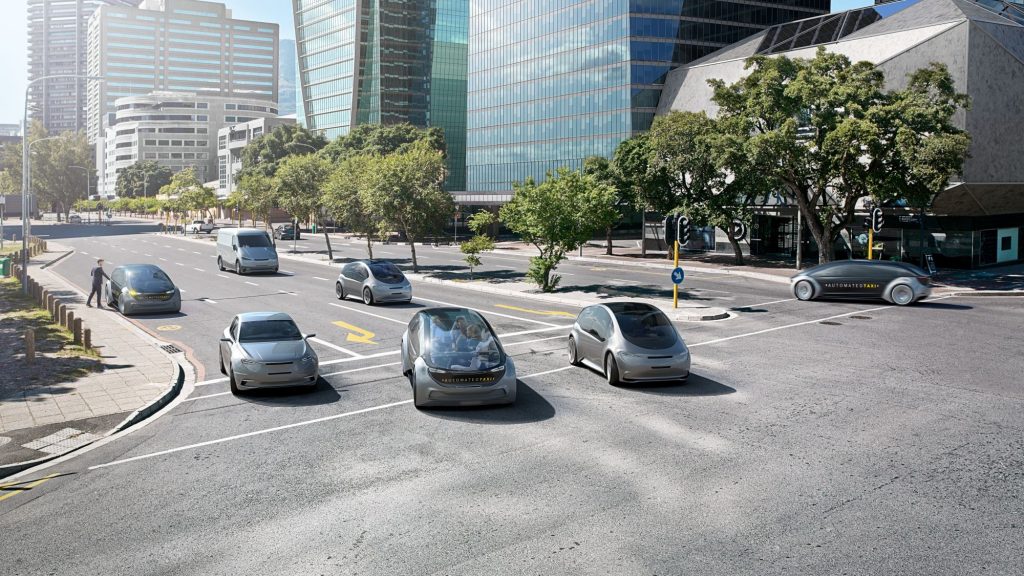
Project leaders Bosch and BMW, along with their German automotive industry partners, have revealed the results of the Verification and Validation Methods (VVM) project to develop the world’s first structured verification of safety standards for automated vehicles in an urban environment. The findings of the four-year pre-competitive research project were discussed at a final presentation at the Carl Benz Arena in Stuttgart today. Building on the results of previous Pegasus and SetLevel projects, the VVM was funded by the German Federal Ministry for Economic Affairs and Climate Action, initiated by the VDA initiative on autonomous and connected driving, and supported by 21 German industry partners.
The German government is playing a significant role in supporting the industry’s efforts. In June 2017, its Act on Automated Driving became law, changing the rights and duties of drivers during the automated driving phase. SAE Level 3 automated systems were allowed to assume the driving task if certain conditions were met. With the Act on Autonomous Driving in 2021, the government established the regulatory framework for autonomous motor vehicles adhering to SAE Level 4 guidelines were allowed to operate in regular public road transport in determined operational areas across Germany, with the technical details ironed out to allow vehicles to be registered and operated on roads in 2022.
VVM project leaders say that expanding the use of automated driving systems to other scenarios, such as in urban traffic, means that the vehicle and system become much more complex and subject to far stricter requirements. This explains the need for suitable verification and validation methods, which was the focus of the project.
The partners believe that the higher the level of automated driving, and the more complex a system’s area of application, the more key factors need to be considered during development. The project’s methodological approach is said to be the world’s first standard to take other industrial processes into account, underscoring the German automotive industry’s desire for a pioneering role in automated driving.
“Pedestrians, cyclists, motorized two-wheelers, intersections with limited visibility; one of the biggest challenges for automated driving systems is coping with traffic in an urban environment, which is characterized by a huge volume of road users, traffic light systems, traffic signs, and vehicles,” said Roland Galbas, Technical Expert and Project Leader at Bosch, and VVM consortium project coordinator. “For future vehicles to be able to handle even extremely rare scenarios, they will need comprehensible structures and processes that not only enable the safe operation of a system in exceptional situations but can also verify that maneuvering is done safely.”
The essence of the VVM research project was to verify that automated driving functions react safely and reliably and that they also benefit customers in terms of precision and quality, according to Dr. Mark Schiementz, who works in Pre- and Series Development of ADAS and automated driving for BMW, and a co-coordinator of the VVM project.
“In addition to compliance with regulations, the guiding principle behind the German automotive industry’s work is not only to get technological progress onto the roads as quickly as possible but also to provide safe vehicles and systems that can be relied on at all times,” he said. “And this reliability starts right from the development of these systems.”
The 21 project partners jointly developed models for a suite of procedures, methods, and tools because safety functions must be verified before a vehicle can be approved and certified for road use. They worked together on several subprojects to develop the methodology to be applied industry-wide for verifying the safety of automated vehicles.
“The models developed here make it possible for the first time to provide all automakers with the same structures for the verification and validation of automated driving systems in urban areas,” explained Dr. Helmut Schittenhelm, a VVM project coordinator and Manager of Safety Performance for Driver Assistance and Safety Systems at Mercedes-Benz. “This may then also lead to industry-wide standards that could make road traffic even safer for all road users.”
The VVM will enable industry-wide collaboration and its scenario-based safety verification approach could help to influence other global standards. Using the Act on Autonomous Driving as a regulation template, Germany is taking great interest in creating overarching rules and advocating for evolving the legal framework at the EU and UNECE levels.
Thanks to a German initiative, Level 3 ALKS (automated lane-keeping system) up to a speed of 60 km/h (37 mph) on motorways, which may be used in traffic jams, has been adopted at the UN level. The country’s Federal Ministry for Digital and Transport has also been actively involved in amending the UN regulation on ALKS, aiming to change the legal system to allow for speeds of up to 130 km/h (80 mph) and enable it to perform lane changes.

